Статьи журнала - Вестник ВолГУ. Серия: История. Регионоведение. Международные отношения
Все статьи: 1645
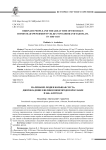
Статья научная
There are a lot of scientific papers about Russian cities between 16th and 17th centuries, however the discussion is focused mainly on economic activities and duties of citizens. The article presents the results of the study of transfer deeds of homesteads in Novgorod and Yaroslavl during the Time of Troubles. The dependence between the social status of the owner of a house, the value of his homestead and the character of its development is not always obvious. It turned out that in spite of the disorganization of state administration during the civil war, there was no mass transition of taxable households to ‘ belomestsy ’ in the cities studied . One of the most important factors of the economic crisis of the early 17th century was military and political violence, which resulted in mass death of men and deformation of the family sex and age structure.
Бесплатно
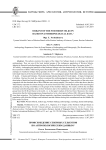
Origins of the northern selkups based on anthropological data
Статья научная
The authors examine the origins of the Upper Taz Selkups based on craniology and dental anthropology. They are one of the least studied groups of the indigenous population of Western Siberia. Judging by historical and ethnolinguistic data, the Northern Selkups moved to the Upper Taz region in the 17th - 18th century. Anthropological materials of the Northern Selkups were first obtained only in 2013 and 2016 during the excavations of Kikki-Akki burial ground. Recorded according to archaeological data, the burial rite has direct analogies in Southern Selkups burial grounds of the 17th - 18th centuries, with the exception of the selected individual features of the Eastern Khanty traditions. The craniological sample from Kikki-Akki burial includes 21 skulls - 13 males and 8 females. The dental sample includes the teeth of 22 individuals - 10 male, 6 female and 6 children. During the study the authors examined the anthropological materials based on the method of description of dental and cranial morphology, performed statistical integration. Characteristics of the series were compared with the obtained data of West Siberian near-recent samples. The analysis of the data shows that the Vakh Khanty represent the closest analogy to the series from Kikki-Akki, but the female part of the craniological sampling has a strong resemblance to the groups of the Southern Selkups. The results confirm the available historical and ethnolinguistic data on their formation due to the resettlement of a part of the Southern Selkup group from the Ob River Basin to the north, i.e. to the upper reaches of the Taz River. Moreover, the results demonstrate that the Selkup appearance changed quite a lot in a short period of time (200-300 years) that passed since their migration. The Northern Selkups acquired a significant resemblance to the Vakh Khanty - the only population with which the Selkups could maintain marital relations during their resettlement from the Middle Ob River to the Taz River.
Бесплатно
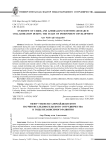
Статья научная
Introduction. The author provides data about coming into being of Uzbek and Azerbaijani scientific collaboration during the years of independent development of the two countries. The article deals with solid contractual basis in the scientific sphere, including the agreements between the Ministries of Public Education, Academies of Sciences, higher education institutions of the two countries, and with the collaboration in the field of the attestation of highly-qualified scientific and scientific-pedagogical personnel. Methods and materials. The given article also contains information about the direct co-operation of the two states in the sphere of natural, exact sciences and humanities, furthering close and fruitful interrelation of the two countries’ scientific circles, covering all the given sphere’s branches of partnership relations. Analysis. The article analyzes the process of multifaceted scientific cooperation between Uzbekistan and Azerbaijan, which occurs through the establishment of close contacts between scientists and research centers of the two countries, the implementation of joint research on pressing issues, mutual internships and scientific business trips, as well as the participation in international scientific conferences and symposiums. Close mutual contacts are also carried out in the form of the exchange of scientific personnel and work. Results. The multifaceted Uzbek-Azerbaijani scientific cooperation considered in the article is represented by the following factors: bilateral agreements and arrangements in the scientific field; direct development in the field of natural, exact sciences and humanities; implementation of mutual internships and scientific missions; exchange of scientific personnel and labor.
Бесплатно
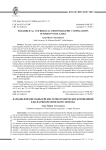
Parabiblical and biblical chronographic compilations in Simeon's Bulgaria
Статья научная
The paper explores the role of a lost Byzantine chronographic compilation in shaping Bulgarian historiographic model in the early 10th c. The compilation was translated into Bulgarian by order of Tsar Simeon the Great and survived in five Russian copies of 15-16th cc. belonging to a closed textological recension with strong traces of a Glagolitic Old Bulgarian original. The first part of the compilation contains a large and coherent excerpt of Africanus Chronography that gives a concise but exhaustive account of the Christian history of the world from the Creation up to the Resurrection of Christ. The second part includes a shorter excerpt, taken from a codex, which contained the second volume of the Chronicle of Synkellos and the chronicle of Theophanes the Confessor. Unlike Synkellos/Theophanes text, Africanus excerpt reveals traces of a serious editorial intervention. The Greek editor(s) left aside all Africanus notices about the pre- Olympic history of all other nations besides the Jews but kept intact his Christological and chronological concepts that treat the history of human kind as a predetermined execution of the Divine Providence in Six Millennia/days. The recent studies on the structure and sources of an impressive chronographic compilation ordered by Tsar Simeon and known as the Chronograph of the Archive or Jewish Chronograph allow us to presume that this Chronograph represents an enlarged version of Africanus excerpt, in which the paraphrase of the first nine biblical books is replaced with a large Old Testament compilation.
Бесплатно
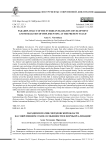
Статья научная
Introduction. The article examines the key paradiplomacy areas of the Sverdlovsk region. The analysis focuses on the aspects distinguishing the region from other subjects of the present-day Russian Federation, which allowed it to become one of the leaders in developing international activities during the post- Soviet period. Methods and materials. The methodological basis of this work is constituted by the approaches devised by I. Duchacek. Paradiplomacy is defined as international contacts of regions with different actors in international relations regarding economic, political, cultural and environmental issues. These contacts move in the same direction as activities undertaken by central authorities. Approaches by I. Duchacek, R. Kaiser, A. Kuznetsov, Yu. Akimov were applied to study the motives and factors for active paradiplomacy development of the Sverdlovsk region. To examine the modalities of implementing paradiplomacyin the Sverdlovsk region, scientific and analytical materials were used along with statistic data and indicators provided by the Ministry of International and Foreign Economic Relations of the Sverdlovsk Region and by the Russian Export Center JSC. Analysis. It was found that the Sverdlovsk region became the first to base its paradiplomacy on the regional identity. On the one hand, the regional identity development was marked by a conflict between the region and the central authorities; on the other hand, the local ruling groups deliberately fostered the policy of regional uniqueness. Mainstreaming the regional identity served the practical interests of elites both in internal political legitimation and in establishing their international economic, political and cultural personality. In the 2000s, the paradiplomacy model of the Sverdlovsk region transformed from conflict to cooperation based on partnering and seeking a compromise with the federal government. Results. The strategy of paradiplomacy development chosen by the region is evaluated as a success. The emphasis put by the regional authorities on implementing large-scale international projects and developing foreign trade relations allows the Sverdlovsk region not only to keep the indicators of foreign economic activities stable, but also to retain elements of its regional identity.
Бесплатно
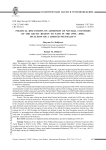
Статья научная
Introduction. Sweden and Finland obtain a special position within NATO strategy towards neutral states. The purpose of the paper is to analyze the background and perspectives for Sweden and Finland to join NATO in the 1990s - 2000s. This issue appeared on the top of agenda after these countries had entered the EU, and right after the Baltic states became members of NATO.Finland started to distant itself from Russia in 1990-1992, right after recognizing itself free from militaryand technical limitations set in the Peace treaty signed in 1947 and gaining an ability to arrange political and military alliances with other countries. Joining the Alliance has first appeared on the Finnish political agenda in the first half of the 1990s, though the political elite of Finland defining its practical relations with NATO also took into consideration the position of Russia since both countries had a long joint terrestrial border and close economic relations. Sweden started revising its foreign policy vector in 1991. The governing elite had an active discussion which ended with a compromise decision on preserving the neutral status of the country alongside with enforcing its defensive capacities.Since 1992, Finland and Sweden became participants of various agreements with NATO. Their armed forces and armaments systems have adopted the NATO standards, and have been working out their practical interaction during the joint militarymaneuvers and within Partnership for Peace program. In 2009 Nordic defense cooperation emerged, including three NATO participants - Iceland, Norway and Denmark. In April 2014 theysigned an agreement on close military cooperation. Results. We can state without any doubt that Finland and Sweden would join NATO only when they face a real threat towards themselves. Russian policy in the region can be a trigger for that. After Crimea annexed Russia, the amount of advocates of joining NATO increased. Nevertheless, they still remain a minority. In this situation a referendum on joining NATO appears to have no perspectives. On the contrary, we should mark that both countries became involved into “crawling” integration into NATO structures: alongside with official Partnership for Peace program it takes place in the official European integration institutions. After joining the EU in 1995 Sweden and Finland are obliged to obey the joint European security and foreign policies, i.e. arranging their military and foreign policies with basic principles and directives developed jointly with other EU members, who are also participants of NATO. Thus, neutrality of these two states becomes a phantom, especially towards Russia.
Бесплатно
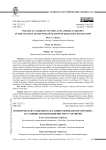
Статья научная
Introduction. The research topicality is determined by the necessity of interior political proving of regions stable development in the conditions of religion institute politicization in 20th - 21st centuries. The purpose of the work is to analyze the influence of the confessional factor on the domestic political process in the Latin American region in the context of global trends of our time. Methods. The work uses methods of theoretical and applied political science analysis, methods of forecasting and modeling. The methodological basis of the work was the principles of systemic and constructivist approaches. Analysis. In the result of political science analysis of stable social and political issues development questions the explicative model of religion institute politicization processes influence to the sustainability of the Latin American region was offered. The theoretical importance of the research is in the reasons and tendenciesrevealing ofreligion institute politicization in the Latin American region. The practical importance of research is determined by the possibility of recommendation output of interior political support of the Latin American region in the conditions of social and cultural uncertainty. Authors’ contribution. E.V. Efanova - the concept of the study, collection and processing of materials; E.M. Drinova - research methodology, writing of the main text; N.Yu. Veremeev - analysis and translation of foreign sources.
Бесплатно
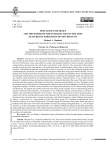
Статья научная
Introduction. The radical transformations of recent decades have significantly changed the lives of ethnic groups like the Udis. Due to their small numbers and poor degree of protection, ethnic groups are the first to feel tension, crises, and conflicts in society, the sequelae of political, social, economic, and cultural modernization, and growing risks and threats in the global world. Methods. The systematic method made it possible to determine the contradictory and conflicting nature of modernization taking place in post-Soviet societies. The dialectical approach, the principle of unity in diversity, as well as the synergetic approach have revealed ambiguity, dynamism, and conflict in the emergence of both ethnic and general cultural identity. Analysis. Studies of the real state of post-Soviet societies have shown the unbalanced and diffuse nature of modernization, the ambiguity of the present, and uncertainty of the future. Considering the Volgograd region, the authors point out relatively stable interethnic and interdenominational relations. Simultaneously, it was revealed that the absence of a national ideology and common objectives and values problematize the issues of the joint existence of nations and ethnic groups, and hamper the search for a common cultural identity. Results. The paper reveals the complex nature of the dynamics of heterogeneous Russian society and the inadequacy of calls for unity and integration of peoples while the society continues to be fragmented, polarized, and its citizens being alienated and atomized. The agenda for national minorities and ethnic groups includes issues of determining genuine national interests by the authorities, the formation of an all-Russian identity, and patriotism as the basis of stability and sustainable development of the country. The complex environment of social communication is replete with various multifaceted processes and influences that will allow representatives of ethnic groups to become carriers of common rules, common moral norms, and cultural meanings, values, traditions and customs. Authors’ contribution. As a representative of the Udis ethnic group, R.A. Danakari considered the socio-political existence of his native ethnic group. The author argues convincingly that modern forms and types of modernization destroy the “life world” and traditions of most Udis, leading to marginalization, i.e., loss of origins and roots, as well as assimilation and acculturation. V.Yu. Podurueva-Miloevich focused on the political dynamics and psychological characteristics of the rapid transformation of the modern world. As a result, the author reveals the inability of most minor ethnic groups to adapt to postmodernity, to make the transition to a new identity, and to achieve self-realization.
Бесплатно
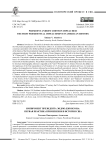
President Andrew Johnson impeached: the first presidential impeachment in American history
Статья научная
Introduction. The article is devoted to the mechanism of impeachment procedure on the example of the first practical application of it in the history of the U.S. in relation to President Andrew Johnson. This created a necessary precedent in the further political struggle between the branches of government and has made the study of the history of the first presidential impeachment an urgent problem. Impeachment cases were brought against six subsequent presidents: Cleveland, Hoover, Truman, Nixon, Reagan, and G.W. Bush in the lower house of Congress. W. Clinton and D. Trump’s impeachment was discussed in the Senate, but was not successful. Methods and materials. The article is based on materials from the American press as well as cartoons. The novelty of the source base is in combination of verbal and visual materials. The author used theoretical concepts developed within the framework of interdisciplinarity. The problem-chronological approach was the methodological basis of the research. In American historiography, Johnson is regarded as the “worst” President in U.S. history. However, the debate over the legitimacy of the first impeachment of a President in U.S. history has not subsided until now. In American studies, the impeachment of Andrew Johnson has not been specifically considered. Analysis. The conflict between the President and Congress was caused by the Reconstruction policy. The confrontation between the two branches of government led to impeachment. The President was charged in connection with the dismissal of Secretary of War E. Stanton, which was a violation of the Tenure of Office Act. The article examines how the impeachment procedure was implemented by Congress and why it failed. Results. Despite the failure, the first impeachment of a President in the history of the United States showed the effectiveness of the “checks” and “balances” mechanism in implementing the principle of separation of powers. It has become a deterrent to the relationship between the President and Congress.
Бесплатно
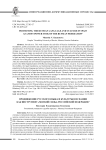
Promoting the Russian language and culture in Spain as a soft power tool of the Russian Federation
Статья научная
Introduction. This work inspects the activities of Russian institutions (government agencies, foundations, public associations and educational organizations) as instruments of soft power in the field of the dissemination of the Russian language and culture in Spain. The pre-requisites of establishing the language strategy as a foreign policy instrument, the main forms and sphere of activities in promoting and supporting the Russian language in Spain are analyzed in this article. Methods. The comparative historical method is used to substantiate the aspects of the formation and development of the language policy program of the Russian Federation in Spain and other European countries in the historical retrospective. The systematic approach is used to formulate a holistic view of the policyof promoting the Russian language and culture in Spain as an instrument of soft power. Also, the institutional and neo-institutional approaches are used to identify formal and informal institutions of soft power in the field of popularization of the Russian language and culture in Spain. Analysis. As a result of analyzing the problem, the legal foundations and institutional foundations of the activities of the Russian Federation to popularize the Russian language and culture in Spain have been studied. The main directions and results of the soft power policy in the field of popularizing the Russian language and culture in Spain and their role in creating a positive image of Russia in Spain have also been identified. Results. The study shows that in recent years, thanks to the soft power policy, the Russian Federation has managed to maintain and, in some positions, expand its presence in Spain in the humanitarian and information space.
Бесплатно
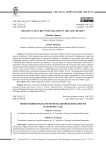
Regional security integration in the SADC region
Статья научная
The Southern African Development Community (SADC) is one of Africa’s most vivid examples of security integration. As the regional group aspires to promote political and economic independence, peace and security are considered indispensable for regional development, as instability in one member state could harm neighboring countries. Methods and materials. Relevant literature was critically analyzed, and the study adopted a secondary data collection method as an approach. Using the theory of security communities and theories of integration, this paper analyzed the historical security cooperation between the countries in the region as the first step towards regional integration in Southern Africa, that is, the restraining of the apartheid regime in South Africa. Analysis. The analysis further focused on establishing and evolving the Organ on Politics, Defense, and Security (OPDS) and its institutional relationship with the SADC Summit. Results. The findings showed that SADC faced more internal challenges than external ones, which led to regional integration. Leading factors in the lack of peace and security were armed conflict, legacy of violence, and poor governance, among others. SADC envisioned peace and security through the adopted Strategic Indicative Plan for the Organ (SIPO). The author concludes that the SADC Summit and the OPDS are the leading platforms for managing security issues in the SADC region.
Бесплатно
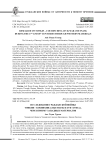
Статья научная
Introduction. The article researches Tonkin - Cochinchina Civil War (in Vietnamese history, also known as Dang Trong - Dang Ngoai War or Trinh - Nguyen War) that took place from the early 17th century to the late 18th century in Vietnam. Methods and Materials. When researching this matter, the author used Western materials, including writings, reports, correspondences, diaries, etc., of Western missionaries, merchants, and travellers used to operate in Vietnam in the 17th and 18th centuries. The author combines two main research methods of historical science (historical method and logical method) with other research methods (system, analysis, synthesis, comparison, etc.) to clarify the article’s contents. Analysis. In the 17th and 18th centuries, the struggle for political power between two powers: Trinh Lord in Tonkin and Nguyen Lord in Cochinchina, caused Vietnam to undergo a fierce civil war that lasted for more than a century. This civil war was scattered mentioned in Western missionaries, merchants, and travellers’ materials (including writings, reports, correspondences and diaries), operating in Vietnam during this period. The cause of the civil war outbreak, force correlation between two sides, happening of some battles and using foreign resources of Trinh Lord and Nguyen Lord to defeat the enemy, those were the contents recorded by Westerners. Despite not much adequate, researchers also have a basic visualization of Tonkin - Cochinchina Civil War’s panorama taking place in Vietnam in the 17th and 18th centuries. Results. Based on researching several contents related to Tonkin - Cochinchina Civil War, mentioned in writings, reports, correspondences, and diaries of Westerners present in Vietnam in the 17th and 18th centuries, the author analyzed to draw out the advantages and limitations of these materials. On that basis, the author initially clarifies its value for the research and assessment of Tonkin - Cochinchina Civil War of Vietnamese scholars at present and in the future.
Бесплатно
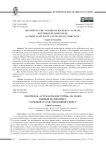
Статья научная
This article reconsiders the textual and archaeological evidence on the delimitation and, most importantly, on the naming and the praised “goods” around or in “Kisterna”, a still disputable area situated in the NW (Messinia province) or southern (Laconia province) Mani peninsula. These are a Venetian document, as well as the French and Greek versions of “Chronicle of Morea”, the historical works of George Pachymeres, Nikephorus Gregoras, Makarios Melissenos and archaeological heritage, that is, the castle of Leuktro in Stoupa, Oriokastro in Ano Poula, Tainaro cape in Kinsternes bay. According to the interpretation introduced, the regional landscape and topography, the naming could potentially be associated with cisterns and basins where sh by-products preservation and processing was taken place. These workshops were known from the Roman period as cetariae and probably as “lakkoi” in the Byzantine era. The article by its structure includes the parts “Introduction - Aims”, “Deconstructing a) the term and the reason of the “theme” and “Deconstructing b) the naming”, “Revisiting a) the primary sources” and “Revisiting b) the archaeological evidence” as well as “Conclusions”.
Бесплатно
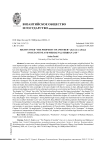
Rights over “the property of another” (iura in re aliena) in Byzantine and mediaeval Serbian law
Статья научная
In some cases, when a person owned property, his rights over such property might be limited. The most important rights over another’s property, mentioned by Byzantine law and accepted in mediaeval Serbian legal sources are servitudes, pledge and emphyteusis. The rules on servitudes (äïõëåßá - rabota) penetrated in Serbian law at the beginning of 13th century, when Saint Sabba (Свети Сава) incorporated in his “Nomokanon” the whole Byzantine “Procheiron” . Its chapter XXXVIII , under the title “On novelties” (Ðåñr κáéíïôïìé§í), contains different provisions, concerning the servitudes, mixed with administrative rules on building the new houses. That was the reason why Serbian translators of “Procheiron” entitled this chapter as “On building of new houses, reconstruction of the old and other things”. While the chapter XXXVIII of “Procheiron” contains 64 provisions, Matheas Blastares took in his “Syntagma” only 18, and created a short Chapter K-3 under the same title “On novelties”(“O novotvorenxhь” in Serbian translation). It contains, beside different decrees and prohibitions by administrative authorities, some urban servitudes, that could be changed by special agreements (óõìöþíïí - sьglasi«). Byzantine legal miscellanies always put together the rules on pledge in the same chapter with the provisions on loan, although modern legal science treats pledge as a part of the law of property and loan as a real contract and the part of the law of obligation. The chapter X of “Ecloga” has a title “On literal and unliteral loans and for them given pledges”; the chapter XVI of “Procheiron” is known under the title “On loan and pledge” and the chapter XXVIII of “Epanagoge” entitled “On loans and pledges”. For this reason, Matheas Blastares included the chapter Ä-2 under the title “On lenders, and loan, and pledges” in his “Syntagma” . Among Serbian legal sources, pledge was mentioned onlyin a few documents: these are so called “Justinian’s Law” (art. 26 and 27); King Milutin’s chrysobull, granted to the Hilandar’s pyrgos in Chrousija; King Dušan’s chrysobull, giving the church of Most Holy Virgin in Lipljan to the Hilandar’s pyrgos in Chrousija; and Dušan’s “Law Code” (art. 90). The chapter XV of the “Procheiron” has the title “On emphyteusis” and contains six provisions, speaking on emphyteusis of Church estates. Matheas Blastares introduced a short Chapter E-8, entitled “On emphyteusis” (“O nasa`denîi” in Serbian translation), in his “Syntagma”. Its chapter represents an interpretation of Justinian’s Novella CXX, chapters 2 and 8. In Serbian legal sources we can not find any information on emphyteusis.
Бесплатно
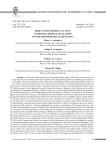
Risks in the North Caucasus: potential or real escalation of the ethnopolitical situation
Статья научная
Introduction. Positive dynamics in the ethnopolitical sphere of the North Caucasus does not mean that there are no further risks of the escalation of the ethnopolitical tension and stabilizing processes are irreversible. The goal and objectives of the article are the identification of the current ethnopolitical situation in the North Caucasus and assessment of the achievements or failures of the decade-long implementation of programs of reconstructiong the region. The authors identify risk factors of the ethnopolitical tension in the North Caucasus as a key approach to conflict forecasting, develop a hierarchy of risk factors, and assess the optimality of management decisions. Methods and discussion. In the context of the discussion the most relevant is understanding risks as an inevitable product of decision-making (Luhmann). The analysis of risk generating processes in the North Caucasus is most effective from the standpoint of the conflict studies (conflict resolution) approach (Burton). Empirical data was obtained by series of expert surveys, the Delphi method, content analysis of media sources (the Internet, printed press, radio, television) and analysis of official statistical data. The conclusion was made that during the past three years positive results have been achieved mainly due to administrative resources and activities of the institutions of force (“siloviki”), but those resources are close to exhaustion. All “classical” risk factors identified by the country’s leadership in 2009 remain and “new” risk factors are actualized. Among the “classical” risks, the first positions are occupied by the low level of industrial production, the critical dependence of the North Caucasus republics on federal budget subsidies, the lag in life standards in these republics from the average in Russia, the retention of a high unemployment rate. These risks are to a large extent due to such factor as the low efficiency of regional authorities. The “new” risk factors include those that were in a latent state, but now can turn into manifest conflicts. This is, above all, a land-use problem that has various modifications: ethnic, territorial, economic, historical. Further studies of the problems of the North Caucasus are related to the analysis of the effectiveness of the system of ethnopolitical security and centre-peripheral relations, to the new non-trivial approaches in the theory of Russian federalism, to the choice of a model of spatial development of the Russian Federation. Analysis and results. Despite the general improvement of the climate of ethnic relations, risk factors in the ethnopolitical situation in the North Caucasus can result in the return of the region to the negative conflict scenario. The modern North Caucasus can be characterized as a risk society, in which risks appear as a result of decision making more and more frequently. Some positive “shifts” in the economic and social basis of life in the region are not sufficient for irreversible changes of the situation for the better. The specificity of current problems in the North Caucasus is that their conflict potential can be implemented “unexpectedly” through various indirect links.
Бесплатно
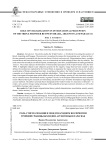
Статья научная
Introduction. The article studies the Triple Frontier – a Tri-Border Area along the junction of Brazil, Argentina and Paraguay. The main aim is to analyze the reasons for its perception as an ‘outlaw territory’, the term generally associated with the terrorist threat. Methods and materials. Stigmatization theory, symbolic interactionism and securitization theory serve as a theoretical and methodological basis for the research. The main sources for the analysis are official reports, communiques, interviews, and publications in leading periodicals. Analysis. The article analyzes the formation of international perception of the Triple Frontier since the mid- 1990s. It highlights objective and subjective grounds for the negative image that has been created to date; defines the mechanisms exploited by the United States to stigmatize the region and the reasons for selective securitization of threats emanating from there. According to the authors, the Triple Frontier is characterized by a complex set of relationships between multiple stakeholders. Their diverse and often contradictory interests form a convergent-divergent space which affects security of local residents, security of Latin American countries, and, to a certain extent, international security in general. Results. In the final part of the article the main scientific results obtained during the research are formulated, and possible ways of further development regarding this case are outlined. The authors conclude that to destigmatize the Triple Frontier it is necessary to rebrand it – to create a new, positive image, taking advantage of the geopolitical and geo-economic situation, as well as the availability of unique water resources
Бесплатно
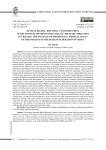
Статья научная
Introduction. Digital diplomacybased on cutting-edge information and communication technologies is playing an increasingly major role and is gradually becoming an important tool in boosting traditional public diplomacy by providing information and public opinion support for the implementation of the country's foreign policy abroad. The Embassy of the Russian Federation in China has been actively engaged in digital diplomacy on the Chinese social media platform Sina Weibo, aiming to put an end to the “public opinion hegemony” of the Western media and counter fake news and negative propaganda from Ukraine and other countries about the Special Military Operation. Methods and materials. This paper is built on a streak of official interviews with diplomats at the Embassy of the Russian Federation in Beijing. Drawing on content analysis of the microblogs published by the official account of the Embassy of the Russian Federation in China from January 1, 2022 to April 1, 2023, this article examines the digital diplomacy of the Russian official institutions regarding China against the background of the Russian Special Military Operation in Ukraine. Analysis. Russia's digital diplomacy towards China has been focusing strongly on the Special Military Operation. In the field of digital diplomacy with China, two main information sources have arisen that are represented by the Russian Embassy in China and two mainstream media outlets, Russia Today and Sputnik. They advocate steadfastly for Russia's national interests and express its official stance. In terms of content and topics, the Russian Embassy's Weibo diplomacy with China is overwhelmed by the political issues following the Special Military Operation, that emphasize the official position of Russia and explains the objectives of the Special Military Operation - to disarm and control the foreign forces used against the people of Donbas and to stop neo-Nazism and its ideology. In terms of communication methods, the Weibo operations team of the Embassy of the Russian Federation in China has demonstrated its professionalism and aptitude to market events while using such unique Weibo functions as the hashtagging events feature. Results. The target audience's attention to a hot issue is time-sensitive, i.e., about one month after the event, which is the “golden stage” for effective digital diplomacy. At the same time, the study illustrates that while carrying out digital diplomacy activities with China, the Russian Embassy in China still has shortcomings in its performance, i.e., in early 2023, the official position was over-highlighted and the content and form of communications were relatively homogeneous. The content of communication should be appropriately enriched in order to eventually build up a multi-faceted and multi-angle communication system.
Бесплатно
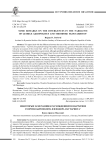
Some remarks on the divergences in the narrative of george akropolites and theodore skoutariotes
Статья научная
This paper deals with the differences between the texts of the two main sources for the 13th-century Byzantine history - Χρονικx συγγραφή of George Akropolites and Σύνοψις χρονική of Theodore Skoutariotes - who give an account of the events from 1204 to 1261. The Chronicle of Theodore Skoutariotes relies on the historical work of GeorgeAkropolites to a great extent, although significant additions toor omissions from Akropolites’ narrative can be noticed. The greatest divergence from the text of Akropolites is in the portrayal of the Laskarid emperors and the first Palaiologos, Michael VIII. Skoutariotes expressed positive attitude towards the Laskarids in the praises of their imperial virtues. In respect to Michael VIII, however, Skoutariotes tended to mitigate the excessive commendation of Akropolites by omitting certain epithets, or, by a careful word play that sometimes resulted in completely opposite statements compared with the ones we find in Akropolites. The differences in the accounts of the two writers can be explained by Skoutariotes’ employment of other sources, unknown to us today, and also by the fact that he included his eye-witness account in the Chronicle he compiled. The additional details provided by Skoutariotes are corroborated with the information we find in other surviving sources, a fact which gives his testimony much more significance than previously believed. Apart from that, the author rises an important question of the employment of Skoutariotes’ Chronicle by later historians. The article consists of the following sections: Introduction ; George Akropolites and Theodore Skoutariotes. Their works ; Methodology ; Results and general remarks ; as well as Divergences concerning the reign of Theodore I Laskaris (1205-1221) ; John III Vatatzes (1221-1254) , Theodore II Laskaris (1254-1258) ; Michael VIII Palaiologos (1259-1282) ; and Conclusion .
Бесплатно
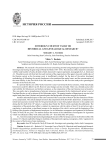
Sovereign court of Vasily III: historical and genealogical research
Статья научная
The research is focused on the issues concerning personal and genealogical composition of the Sovereign court during the great reign of Vasily the Third (1505-1533). The relevance of the research is connected with the small number of works devoted to Vasily Ivanovich's reign (in particular, monographs by A.A. Zimin and A.I. Filyushkin), and with that fact that such institute of the organization of the upper class and middle class of the Russian society as the Sovereign court is insufficiently studied. On the basis of the earlier developed methodology of allocating the servant landowners who constitued the capital court, and the reconstruction of the court nobility in the first third of the 16th century, the authors for the first time analyze th e genealogical structure of the Vasily III court. It is proved that the core of the Vasily Ivanovich's court was formed by those surnames, which had already been known under his father Ivan III. However some changes are also revealed. There was a limited access to the court nobility for little-known and lowborn surnames, so the composition of the court became more aristocratic. This was partly due to strengthening of princely aristocracy represented by the Gediminovich prince's sons of Northeast Russia, as well as princes of the Lithuanian origin. The greatest number of departures on service to the capital took place from Lithuania and passed against the background of Russian struggle for Smolensk. Another understudied aspect of the court concerns Pskov accession to Moscow and the formation of Pskov service corporation. This article attempts to restore the composition of the first Pskov landowners, to determine the initial land accessory (mainly from the Novgorod land) and to trace their gradual inclusion in the capital court during the first half of the 16th century. A section about Vasily the Third's clerks concludes the publication. The composition of the grand-ducal office is studied, its comparison with the clerks of Ivan III is carried out, and a conclusion is made about a significant increase in the prestige of the clerk's service and the beginning of the folding of the dynasties of departmental employees. As an illustration, monograms and signatures of the famous clerks of Vasily III are given. The authors analyze the reasons of the substitution of monograms for signatures which was reflected in office-work of the end of the 15th - first third of the 16th century. A.L. Korzinin analyzed personal and genealogical structure of the Sovereign court in the first third of the 16th century. N.V. Basnin studied the change in traditions of the paperwork (signing, monograms, clerks' signatures) in the context of the history of state institutions.
Бесплатно
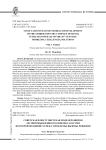
Статья научная
Background: The purpose of this study is to identify common and specific trends in the implementation of models of Soviet and post-Soviet modernization of the timber industry in Russia. Methods: The methodology of the research is based on the use of theoretical approaches of historical and economic sciences. Such a wide range of methodological approaches used in the work is related to the complexity of the study, which included analysis of the interaction of the state, the timber industry complex and the region at the macro-, meso- and microlevels of social and economic interaction. Findings: The dynamics of the development of the domestic timber industry complex during the period under review was characterized by a hasty growth, then a stage of maturity and, subsequently, a stage of decline. Moreover, this dynamics was marked both in production and economic indicators, as well as in capital investment indicators that affected the industrial and social infrastructure of the timber industry, as well as on quantitative and qualitative indicators of the development of mechanization in the timber industry and the achievement of scientific and technological progress. The final transition of the domestic timber industry complex from a group of stable industries of the old technological order to the problem group has become an obvious proof of the counter-modernization model of development. However, we need a search for new transformational solutions. At the present stage, Russia needs an urgent transition to the process of building a cluster policy in the timber industry. Such a policy should be carried out both at the regional and national levels, as well as in the context of international cooperation. Application:The findings of the study will be helpful for specialists who deal with the issues of economic or industrial history.
Бесплатно

